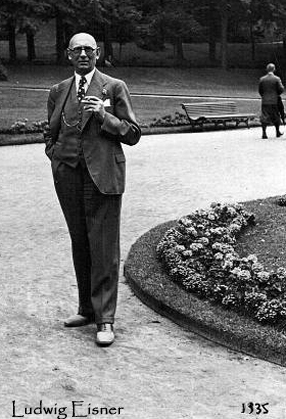 |
 |
 |
 |
 |
 |
 |
 |
1938 was the year of the arianisation. The pressure on Jews became so strong that they had to sell their properties and companies, mostly far beneath marketprices.
 My grandfather not only "purchased" the former Jewish school, but undertook a further arianisation that was morally even more condemnable. In February 1938, he purchased the apartment and business premises of Ludwig Eisner.
My grandfather not only "purchased" the former Jewish school, but undertook a further arianisation that was morally even more condemnable. In February 1938, he purchased the apartment and business premises of Ludwig Eisner.
The Eisner family couldn‘t run the shop any longer, because since summer 1937 Jews wasn’t allowed to encash the outstanding debts from “Germans”. In February 1938 the outstanding debts had already amounted to around 30,000 RM. Therefore the family was forced to sell their property and the shop.
The purchase agreement as of February 1938 states a purchase price of 40,000 RM. It is today nearly impossible to reconstruct the market value of the property. After WWII Rosa Eisner estimated the value to be about 70,000 to 80,000 RM. Just an annex of the existing building erected in 1935 would have cost 25,000 RM. All the statements of Rosa Eisner in her restitution proceedings were credible as the authorities have noted in the restitution file. But in this case the value she gave was a pure estimation. I personally made an estimation based on various indicators of size that I took from the restitution files both of my grandfather and Rosa Eisner. Thus I do believe that the purchase price as agreed upon in February was quite close to the market value (see estimation on the right hand side).
The purchase agreement, however, also provided that my grandfather had to pay only 25,000 RM upfront; a second instalment of 15,000 RM was due in 1943 and therefore secured by a mortgage. I do consider this provision to be perfidious. At the time of the conclusion of the purchase agreement the Eisner family was about to prepare their expatriation. They needed the money for their expatriation and a new start somewhere. Furthermore, my grandfather could assume that it would be anything but impossible for Ludwig Eisner as a Jew, to reinforce the payment of the second installment from outside Nazi-Germany.
 In September 1938 the said purchase agreement was declared null and void and a new purchase agreement was concluded which provided a purchase price of merely 29,000 RM for the property.
In September 1938 the said purchase agreement was declared null and void and a new purchase agreement was concluded which provided a purchase price of merely 29,000 RM for the property.
Read here the proof, that the purchase price was reduced..
The difference between the already paid 25,000 RM and the new purchase price- 4,000 RM- my grandfather had to pay immediately and did so. But how did it come to the conclusion of a new purchase agreement?
It is certain that the Nazi-administration approved the first purchase agreement, since the purchase price hadn‘t been higher than 2 ½ times the so called standard value. The Nazi-administration thus had verified that Ludwig Eisner had not taken advantage of my grandfather. Consequently, my grandfather paid the real estate transfer tax. In March 1938 he got a further letter from the Nazi-administration ordering him not to pay Ludwig Eisner directly but to transfer both the instalments due in 1938 and 1943 to a bank account of Ludwig Eisner that had been confiscated by them. This letter obviously made it clear to my grandfather that he would also have to pay the second instalment because the Nazi-administration would reinforce it on him to encash it for themselves.
Read here the letter of the authorities.
I do assume that my grandfather immediately upon the reception of the said letter entered into negotiations with the Nazi-administration and that it was agreed, that my grandfather would pay 4,000 RM immediately instead of 15,000 RM in 5 years’ time.
In order to legitimatize this agreement, my grandfather and/or the Nazi-administration accused the Jew Ludwig Eisner of fraudulent behavior. The purchase price as provided in the first agreement would have been based on the standard value and the standard value as provided by Ludwig Eisner would have been too high.
The Eisner family surely became aware that my grandfather paid the further 4,000 RM, but presumably not of the new purchase agreement. I assume that the new purchase agreement was signed by the trustee that had been appointed as to the bank account of Ludwig Eisner.
My grandfather had purchased the property in order to rent it out to his brother Erich thus providing a better livelihood for him. Erich came to Guttentag in the summer of 1938 to take over the business of the Eisner family. Once again the predicament of the Eisner family was exploited: According to Rosa Eisner, the stock of inventory was way underrated by classifying the goods as slow sellers. But Erich Schatka paid them even 10,000 RM less than the underrated purchase price.
Read here a letter, which Dr. Lothar Eisner wrote
in February 1938 to his parents when he learnt
that they had to sell their shop and property.
Estimation
This estimation is based on the following data and assumptions
The data set in relation would mean that the value of Ludwig Eisners property would have been 54,000 RM. But from this value one would certainly have to make some reductions: